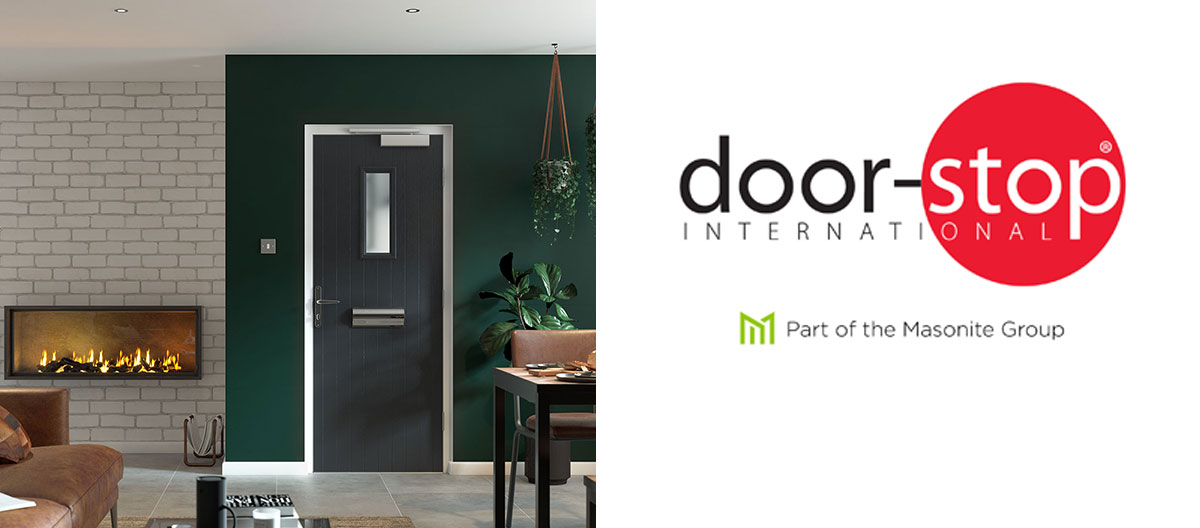Architects and specifiers selecting fire doors for residential buildings need to be confident that they will perform as they should. That is where third-party certification makes a difference.
Door-Stop International has launched its new Fire and Security Dual-Certificated Doorset; a timber core product with GRP facings that is third-party certificated using a robust base of primary test evidence as the foundation for certification.
Full traceability of all doorset components
Door-Stop operate a strict, digital, factory production control system designed to provide complete control and traceability. These processes are regularly audited by independent, UKAS accredited auditors.
Specifiers, building owners and residents can easily access the key features of the specification and associated certification. A unique label is applied to each doorset that aids traceability of the product.
Door-Stop makes what it burns
Door-Stop only undertake fire tests on products that are manufactured under witness and verification of an independent third-party. It means the design specified has been inspected and documented, not a ‘golden sample’ that has been engineered just to pass the test.
The Door-Stop dual-certificated doorset is accredited by the Warringtonfire Certifire scheme to demonstrate fire credentials and by Certisecure for its security performance. This product range is also recognised by Secured by Design as dual certificated.
Multiple tests that make up primary test evidence
Primary test evidence refers to when a fire door has been tested as part of a complete doorset.
Door-Stop includes a list of the test reports used to create the certification scope, and all stakeholders can access the summary test evidence and certification for complete transparency.
Its fire doorsets are tested multiple times across a variety of components and configurations, and goes beyond minimum standard benchmarks including:
- Robust testing regimes: The Door-Stop product range is tested in multiple configurations to really understand the extremes of performance and address potential variability in results. This test evidence supports the specification that is provided by certification.
- Lineal gap sealing: tested with two different methods of lineal gap sealing – a compressible, expansion joint seal which acts as a fire barrier – in order to prove installed performance. Based on those tests, a number of alternative systems are approved for use by Certifire.
By testing in this way, variability is accounted for within the process, which provides additional assurances in the results.
This primary test evidence forms the basis of the certification and demonstrates that the pass was not a ‘one-off’.
Golden Thread
Door-Stop’s digital ‘Critical to Safety’ production control process records the specification and adds traceability of every doorset to offer reassurance that the every doorset meets specification. This creates a golden thread of information that aids traceability for all stakeholders in the chain.
Technical support at every stage
Door-Stop’s online product configurator tool helps architects and specifiers to tailor the doorset to the required specification. This is a critical control point as orders can only be made when doorsets comply with a specification that is compatible with the certification.
Detailed instructions and resources are provided to ensure that doorsets can be installed in line with the certification. Competent installation means the doorset should perform as designed, and assists installers and building owners in meeting their legal responsibilities to ensure the safety of residents.

www.masonite.co.uk/firedoorsets






